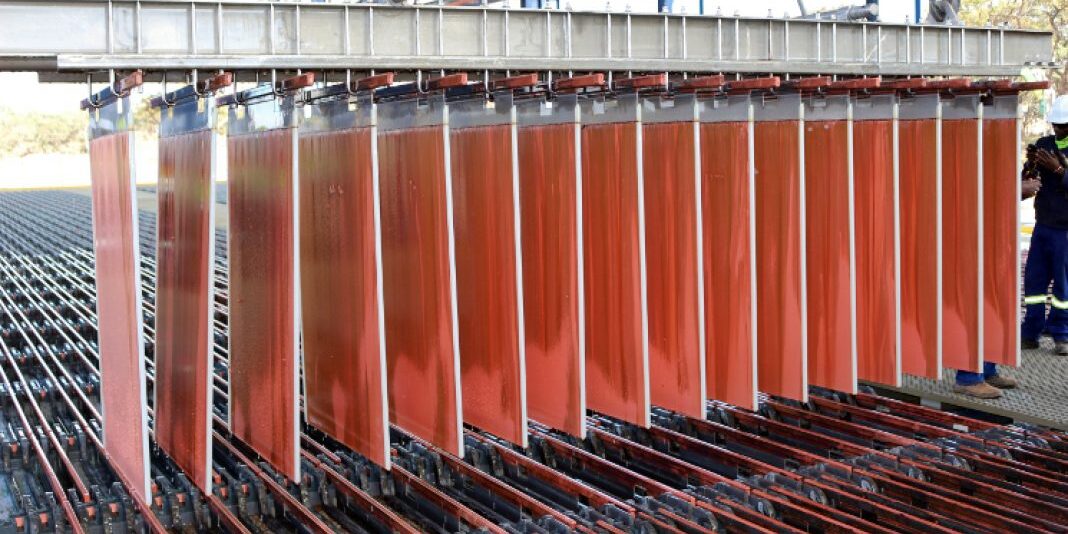The only way we’ll meet copper demand by 2030 is if prices top US$13,000 – Goldman Sachs
- Goldman Sachs says inflation has increased incentive price for the world’s top 50 copper projects to US$9000/t, with US$13,000/t needed to encourage the US$150bn of investment needed to meet net zero targets
- Only one ASX-listed junior, Rex Minerals and its Hillside project, makes the list
- Rex managing director Richard Laufmann sees ‘permanent new paradigm’ of copper trading above US$4/lb
Analysts at Goldman Sachs have sounded the alarm at the dearth of shovel-ready copper mines poised to hit the market at current price in the face of an extraordinary uptick in demand due to come from the green energy transition.
Goldman has been one of the world’s most noteworthy copper bulls in recent times, suggesting demand for the red metal to cater for the electrification of everything from cars and buses to off-grid electricity will blow supply out of the water by the end of the decade.
In one fantastical swoop, commodities strategist Nicholas Snowdon even suggested prices of US$100,000/t, something that would eclipse last year’s US$10,724/t record nearly 10 times over.
Goldman has not gone that far in a recent note outlining the prospects for the world’s top 50 developing copper projects.
But they have said prices above US$13,000/t would be needed to incentivise the 8Mt of additional annual production needed by 2030 to cater for demand from renewables, power infrastructure and EVs — around eight times that of the world’s biggest copper mine Escondida.https://ec3307c4bd77ddf97d50ebb6d6bbc5a8.safeframe.googlesyndication.com/safeframe/1-0-39/html/container.html?n=0
According to Goldman, US$9000/t is the new marginal incentive price for a copper mine today, up 30% on 2018.
At current prices of US$7867/t, which have pulled back in 2022 due to weak near-term Chinese demand amid its property sector’s struggles and Covid lockdowns, 60% of projects are not economically viable.
That could push prices even higher when the world really needs its copper fix.
“This, in our view, could disincentivize/delay decisions on new investment projects, thus exacerbating the deficit in the second half of the decade forecast by our commodities team,” GS says.
50% of world’s top copper projects in high risk jurisdictions
According to Goldman, 50% of supply from the world’s top-50 development ready projects will come in unconventional jurisdictions like the Democratic Republic of the Congo, PNG, Botswana, Panama, Zambia and Mongolia.
These projects have higher reserve grades, but are located in jurisdictions with difficult permitting regimes, endemic government corruption and/or a dearth of mining know-how.
“This leads to higher returns/copper prices being required and indicates possible delays in project sanctioning/execution,” Goldman analysts suggest.
All up, an extraordinary US$150 billion of capex needs to be sunk into the ground by 2030 to bring on this 8Mt wave of new supply.
Given miners who burned their shareholders with failed projects and bad M & A decisions in the boom are trying to make good by converting their cash piles into dividends for shareholders right now, that is easier said than done.
“We estimate next 5Y (five years) growth capex to be 40% lower vs 2010-21 in real terms.”
And since Goldman’s last update in 2018, 50% of the projects on its list have seen their start dates pushed out by an average of three years, caused by increasing jurisdictional risks, ESG concerns from communities and governments (cf. Chile’s tax policies and environmental crackdowns) and investor caution on large capex blowouts.
While copper scrap supply has been extremely elastic to higher prices, higher prices have done little to incentivise new mined copper supply.
Ouch.
Where is the silver lining in this copper maelstrom?
Something has got to budge, and amid the chaos a number of majors, mid-tiers and juniors do have projects worth pursuing that stand to materially increase their production and free cash flows in the coming years.
The belief in the world’s biggest mining companies in copper as a thematic to back has been made clear by decisions from BHP (ASX:BHP) and Rio Tinto (ASX:RIO) to launch ambitious all-cash takeover bids in recent months.
Rio has hit roadblocks with minority shareholders in its US$3.3 billion bid to secure an additional 33% on top of the 33% of the Oyu Tolgoi mine it owns in Mongolia, where a US$7 billion underground development will triple output to 500,000tpa by 2028.
BHP was also rejected in its $8.4b cash bid for Australian mid-tier OZ Minerals (ASX:OZL), which has itself disclosed aspirations to bolster production over time from ~130,000t to 340,000tpa in a bid to soothe shareholders who may have been keen on BHP’s $25 per share bid.
‘…the frog is sitting in the water, and the water is heating up, but he doesn’t realise till he passes out. I think that’s the situation that the world kind of finds itself in here’
If prices catch a ride from a looming supply shortage, just one ASX listed junior is on Goldman’s top 50 list, rubbing shoulders with the giants.
That is Rex Minerals (ASX:RXM), whose permitted Hillside project near BHP’s Olympic Dam and OZ’s Carrapateena and Prominent Hill mines in South Australia’s Gawler Craton is expected to produce 35,000t of copper and 24,000oz of gold over a roughly three decade mine life.
Its current capital cost is slated at US$410m ($585m), though the last estimate was completed in mid 2020, before the current inflationary pressures being seen throughout the mining, construction and labour markets.
Managing director Richard Laufmann, once a high-ranking executive at Western Mining Corporation, said fully permitted copper mines in jurisdictions like South Australia were few and far between.
“I’ve been in this game for a long time and when you really drill down on some of the projects companies are pursuing and where they’re going to pursue them, permitting has become so difficult globally, and takes so long,” he said.
“And it’s such a bumpy road that a lot of companies, Rio, BHP, they’re all setting their sights back on places like the Congo.
“That’s fraught with difficulty. They’re also forecasting an incentive price in excess of US$4 a pound just to get a 15% IRR on a project. These are highly relevant facts, right?”
Copper demand demands new copper mines, now
Laufmann said with 8Mt of additional copper production needed by 2030, the world was sleepwalking into a situation that would have to incentivise developing new mines.
“There’s no argument from anyone on the general sense of the copper thematic, it’s been pretty straightforward for a long time,” he said.
“It’s like a lot of things that play out in real time; the frog is sitting in the water, and the water is heating up, but he doesn’t realise till he passes out. I think that’s the situation that the world kind of finds itself in here.”
Hillside contains an ore reserve of around 974,000t of copper metal at a grade of 0.52%, with estimated operating all in sustaining costs of US$1.60/lb, with a post tax NPV of US$869m and IRR of 23% at an incentive price of US$3.50/lb.
At US$4/lb, that increases to US$1.394b and 32%.
While Laufmann says higher prices are not necessarily essential to get Hillside into production, he thinks investment in metals to power the transition to net zero will require billions if not trillions of dollar worth of support from the market.
While it is currently a few cents below it, Laufmann thinks the world is entering a “permanent new paradigm” where copper will trade above US$4/lb.
“Just to reverse the decline in new mine startup, we have to spend over US$400 billion before 2030. That’s US$400 billion globally before 2030 and we’re already nearly at 2023,” Laufmann warns.
“If you don’t front load that expenditure. You’re not going to get there, it’s too late, she cried.
“If we press the go button today it still takes time and ours is a straightforward project to develop. If you look at some of the projects in the world, they are not straightforward.
“They will take eight years to develop even when you press the start button, assuming they’re financed and permitted. So it’s a really interesting predicament that the world is in.”
Source: Stockhead
176 total views , 1 views today





